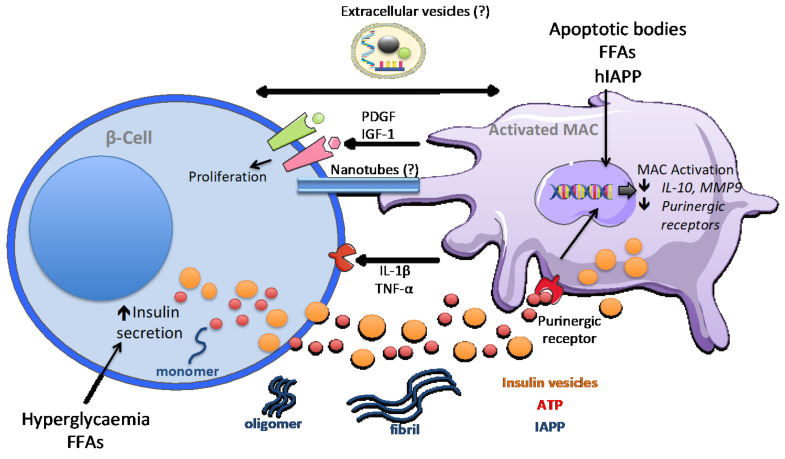Figure 3.
β-cell–macrophage crosstalk in obesity and T2D. Under obesity conditions, β-cells try to compensate over nutrition and hyperglycaemia by releasing more insulin. Macrophages sense the changes in β-cell function via the uptake of insulin vesicles and the hyperactivation of purinergic receptors. This, together with the action of free fatty acids (FFAs), β-cell apoptotic bodies, and hIAPP oligomers and fibrils produced in obese islets activates intracellular processes leading to gene expression modulation. Transcriptional reprogramming triggers the switch in macrophages activation, causing a decrease in IL-10 and MMP9 homeostatic factors and purinergic receptors. Obese macrophages release both growth factors inducing β-cell proliferation and pro-inflammatory cytokines, with a deleterious impact on β-cells. Other proposed routes of communication are tunnelling nanotubes for a direct exchange of cytosolic material and extracellular vesicles.

